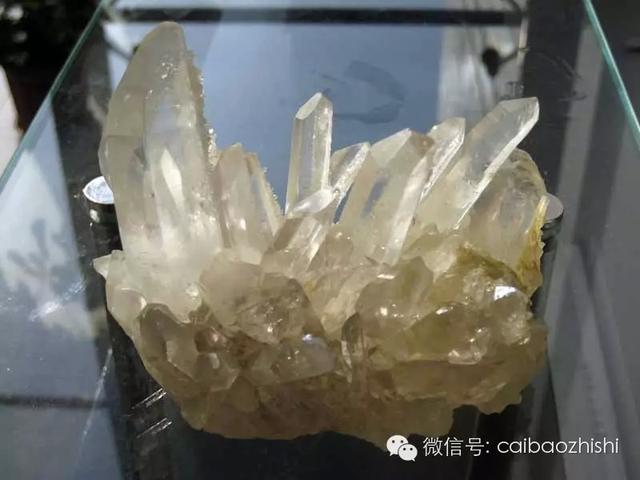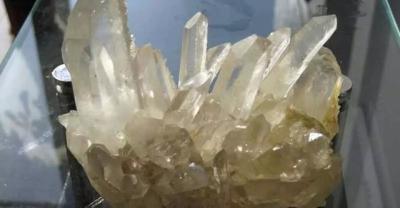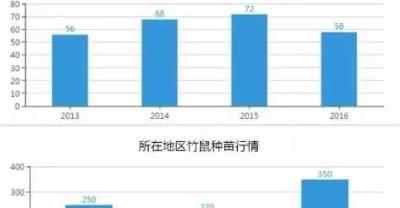Does aquaculture crystal have the same composition as natural crystal? How can consumers tell the difference?
What is aquaculture crystal? Natural crystal is a national defense mineral, natural crystal will produce continuous and stable high-frequency oscillation after electrification, which is often used in the military, used to make the oscillator of electronic instruments, and is an indispensable precious resource. But after all, crystal is a limited mineral resource, so we need a substitute, so we have the later developed "regenerated crystal", that is, aquaculture crystal.
How to make aquaculture crystal? Recycled crystals currently produced in Japan are artificially cultivated in a way known as hydrothermal method. The basic principle is the same as that of natural crystals, that is, in one or two. A large amount of "anhydrous silicic acid" is injected into the three-story sturdy blast furnace barrel, silicon dioxide is added, and the bottom part is heated to about 400 degrees Celsius, while the upper part is kept at about 360 degrees Celsius. The "crystal core" for crystal attachment and crystallization is suspended in this solution, which acts like a cotton thread for rock candy crystallization. Most of the crystal nucleus is made of natural crystal or recycled crystal cut into thin slices, the crystal core is a bit like a transparent ruler of about 20 centimeters, and the crystal is attached to both sides of the crystal nucleus to crystallize outward, and the original "ruler" is clamped by the recycled crystal bag.
Natural crystal and aquaculture crystal have the same composition elements, the same growth direction, hardness, specific gravity, refractive index, and even birefringence, so can they replace natural crystals? From the point of view of electronic components, crystal curing is indeed much cheaper, easier to obtain, more stable in quality and standardized in size, so it has indeed replaced natural crystal.
As we all know, different natural crystals can emit all kinds of energy beneficial to the human body, because natural crystals absorb the essence of heaven and earth in nature for tens of thousands or even hundreds of millions of years, which helps to improve the qi of the human body. But aquaculture crystal does not have this effect, if you are the pursuit of crystal is to be healthy to get rich, or to ward off evil spirits, luck, fengshui, or to buy natural crystal is more appropriate!
Brief introduction of synthetic Crystal
The production of synthetic crystal has sprung up due to the needs of industry, and the emergence of color synthetic crystal has made a great contribution to supplement the deficiency of natural color crystal. However, people know little about synthetic crystals, so there are many misunderstandings about synthetic crystals. Some people mix the synthetic crystal with the glass; some people think that the synthetic crystal is a false crystal; some people think that the synthetic crystal is made by melting the crystal material with small fragments; some people call the synthetic crystal artificial crystal. These understandings and appellations are incorrect. First of all, the silicon-oxygen tetrahedron in the synthetic crystal is a regularly arranged crystal structure. The silicon tetrahedron in the glass is irregularly arranged, and some physical properties of the glass and the synthetic crystal are far from each other, and the market price is also very different, so we can't talk about it alone. As for the crystal fragments after melting at high temperature, it has become a quartz glass material. It is also very irregular to call synthetic crystals artificial crystals.

Synthetic crystal is a kind of artificial gemstone. It is a crystal grown by hydrothermal method under certain physical and chemical conditions in an autoclave. According to the naming regulations of precious jade, artificial gems are named "artificial strontium titanate" if they have no natural counterpart, such as strontium titanate. If artificial gemstones have natural counterparts, such as silicon dioxide crystals grown by hydrothermal method, they have their natural counterparts in nature, which are named "synthetic crystals", but cannot be called "artificial crystals". Nor can it be called "aquaculture crystal", "melting crystal", let alone "pure crystal". Because these names, which are neither scientific nor standardized, are easy to be ambiguous and misleading. The physical and chemical properties of synthetic crystal and natural crystal are basically the same, so synthetic crystal can not be described as "fake".
Production method of synthetic Crystal
Synthetic crystal is a kind of crystal that grows on the substrate of seed crystal. There are two main orientations of seed crystals: one is perpendicular to the z-axis and the other is parallel to the y-axis. Synthetic crystals of different colors have different seed orientations and different ions.
The world's first hydrothermal synthetic crystal was born in about 1905, and topaz and amethyst were synthesized in the Soviet Union in the 1970s. Up to now, a large number of synthetic crystals are used in the jewelry industry every year all over the world. the main varieties are synthetic colorless crystals, synthetic amethyst, synthetic topaz and a small amount of green, blue and yellow, green and green synthetic crystals. China's synthetic crystal technology is very mature, not only can synthesize colorless crystal, but also can synthesize color crystal.
Explanation: a crystal made by artificial method. Including colorless synthetic crystals mainly used in industry and colored synthetic crystals mainly used in jewelry industry are all synthesized by hydrothermal method.
Their principal components, optical properties and physical properties are the same as their corresponding natural varieties, but they are purer and more suitable for industrial or jewelry industry. Synthetic color crystals must add some colorants or doping ions in order to form a color center and present a beautiful color, or change it to another color after irradiation or heat treatment.
Such as rose or light green brown is added titanium, light brown is added vanadium, green is added chromium, tea brown or dark green is added manganese, purple or bright yellow green, yellow brown, yellow is added iron, brick brown or light blue, blue is added cobalt, light green blue is added nickel, light yellow is added copper, dark brown is added aluminum. [1] amethyst is the most noble and beautiful member of the crystal family, also known as fengshui stone, and the Japanese call amethyst energy stone. Amethyst color with purple, because of the infiltration of a small amount of Fe (iron) elements and iron oxide is the main cause of its bright purple, amethyst will also form other patterns, mostly introverted crystal holes (amethyst holes) growth mode, while extroverted amethyst clusters (most of which are white crystal clusters on the market) are very rare.
Identification method
1. Color
Synthetic crystal is formed under relatively stable conditions provided artificially, so its batch samples show too much unity, colorless synthetic crystal can have unified high transparency, while color synthetic crystal shows uniform and unified color, sometimes affected by the concentration of colorant, the color can be too dark, too light, and the color is rigid and hairy. For example, synthetic amethyst can have uniform dark purple with blue tone, while natural amethyst generally has the phenomenon of uneven color, and the color is soft and real.
2. Seed crystal
Seed plates can be seen in synthetic crystals. The seed plate is cut from the natural crystal to take the plate crystal as the seed, so it is called "seed plate". There are two kinds of seed plates: colorless and color. There is a clear boundary and color difference between the seed plate and the late crystal growth. Under the influence of the supersaturated solution in the autoclave or the temperature fluctuation in the autoclave, some impurities or spontaneous micrograins fall on the crystal plane or defective parts of the seed plate, forming tiny tidbits-like twins, which are gray-white and foggy in microscopic observation. Very small stress cracks often appear near the seed plate, and the crack surface is bent, which is arranged at a certain angle with the seed plate.
3. Characteristics of inclusions
Inclusions are also called inclusions of gem minerals. With a wide variety of crystal inclusions, it can be described as "a wonderful mineral world and a rich and colorful mineral museum". Therefore, when identifying crystals, the key is to look at the inclusions of crystals. What mainly appears in the synthetic crystal is cone pyroxene, or the microcrystal nucleus of quartz, in the shape of breadcrumbs. They may come from those undissolved raw materials, when the synthetic crystal growth conditions are stable, the "bread slag" is very rare, when the growth conditions are unstable, especially when the synthetic crystal growth stage is interrupted, a large number of "bread slag" appear in some planes parallel to the seed plate, like "table dust", one layer or even two or three layers run through the whole crystal. Beginners often regard these "bread crumbs" or "table dust" as evidence of natural crystals. If carefully observed under a high-power microscope, the "bread dregs" of natural crystals are mostly small gas-liquid two-phase inclusions, while the "bread dregs" of synthetic crystals are homogeneous and small.
4. Ribbon
There are ribbons in synthetic amethyst and synthetic topaz, but only one group of ribbons appear, which are parallel to the seed plate. The so-called ribbon refers to the ribbon color in the crystal. The color band of the synthetic amethyst is parallel to the rhombohedral direction, and the synthetic topaz is a parallel color band perpendicular to the optical axis of the crystal.
5. Twin crystals
Twins are two or more crystals of the same kind which are formed according to a certain law of symmetry. Brazilian polywafer twins often appear in natural crystals, which can run through the whole crystal or only in the local part of the crystal. The cow-eye interferogram can be displayed in the non-double crystal region of the natural crystal, while the "propeller" interference pattern can be displayed in the double crystal region, while in the synthetic crystal, the cow-eye interferogram can be seen, but the "propeller" interferogram can not be seen.
Welcome to follow "Caibao knowledge" official Wechat account: caibaozhishi, welcome to interact with Caibao Rabbit online, I will serve you wholeheartedly!
- Prev

This paper introduces two kinds of simple and effective orchid culture plants.
First, the formula of 65% gold stone + 35% fairy soil has been widely used and has been widely recognized by Lanyou. With this formula, plant material aerated and leached, Langen generally will not.
- Next

June snow is just blooming season, have you cultivated this year
June snow, for Rubiaceae perennial semi-evergreen vines, flowering in May to August, flowers small and dense, white as snow, so it is called "June snow." The leaves are dense, white...
Related
- On the eggshell is a badge full of pride. British Poultry Egg Market and Consumer observation
- British study: 72% of Britons are willing to buy native eggs raised by insects
- Guidelines for friendly egg production revised the increase of space in chicken sheds can not be forced to change feathers and lay eggs.
- Risk of delay in customs clearance Australia suspends lobster exports to China
- Pig semen-the Vector of virus Transmission (4)
- Pig semen-the Vector of virus Transmission (3)
- Five common causes of difficult control of classical swine fever in clinic and their countermeasures
- Foot-and-mouth disease is the most effective way to prevent it!
- PED is the number one killer of piglets and has to be guarded against in autumn and winter.
- What is "yellow fat pig"? Have you ever heard the pig collector talk about "yellow fat pig"?

